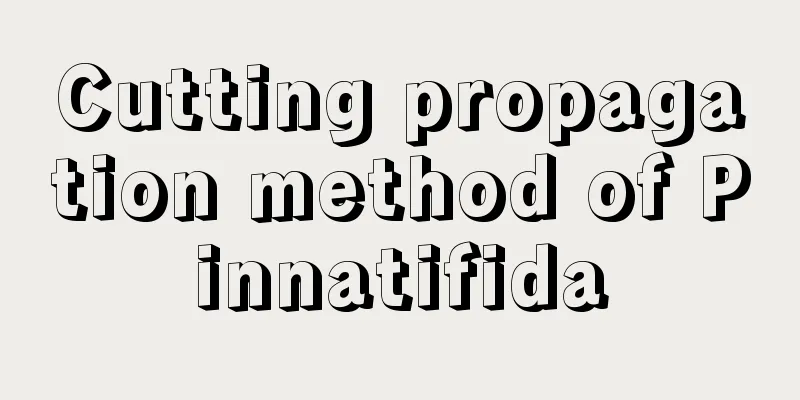Can Monstera survive by cuttings? (How to successfully propagate Monstera by cuttings?)

|
The main propagation method of Monstera is cuttings. The best cuttings are in spring and autumn, so Monstera can survive by cuttings. For cuttings, choose the current year's side branches with full stem tissue and strong growth. The cuttings should be 20-25 cm long, and short aerial roots should be retained to absorb water and facilitate rooting. The cutting bed is a mixture of coarse sand and peat or leaf humus, and the temperature is kept at 25-27℃ and high air humidity after cutting. The cuttings will start to take root about one month after cuttings take root, and the axillary buds on the stem nodes will also begin to sprout and unfold leaves. How to take cuttings of Monstera:First, cutting time:The best time for Monstera cuttings is in spring April-May and autumn September-October. The main basis for cuttings is temperature. The survival rate of cuttings is the highest when the temperature is between 18 and 28 degrees Celsius in spring and autumn. When the temperature is at the best growth stage suitable for growth, the stem node incision heals and roots, and the survival rate is fast. Second, the treatment of cuttings:For cuttings, choose current to two-year-old side branches with strong and thick stem tissue and healthy growth. It is best if there are aerial roots on each node. The cuttings should be pruned to a length of about 20-25 cm. Cut off the leaves at the base, retain the leaflets at the top, shorten the aerial roots that are too long, and retain a section of the aerial roots to absorb water and facilitate rooting. After the branch is cut off, the wound should be dried for more than 24 hours until the wound is dry and slightly shrunk. Third, cutting planting material:There are two kinds of planting materials for cuttings of Monstera: (1) Mix peat soil, leaf mold and about half of freshwater river sand evenly, then place them in a flowerpot. Insert the cuttings about 3 to 5 centimeters into the soil until they can stand firmly and upright. This kind of planting material contains certain nutrients and is loose and breathable without accumulating water. It can be used directly as planting material for Monstera deliciosa without having to repot it. (2) The survival rate of other cuttings is almost 100%, but they still need to be potted later. Spread a layer of sphagnum moss on the sand bed. Place the stem of Monstera deliciosa directly on the sphagnum moss, fix it with a toothpick, and cover it with a layer of sphagnum moss to wrap the stem. It will soon grow roots and sprout. When big white roots grow at the roots, you can plant it in the flowerpot with the sphagnum moss. Fourth, cutting management:The best environment for cutting Monstera is to have bright light all day long and diffuse light for a period of time. The temperature should be kept between 18 and 28 degrees Celsius. The air humidity should be kept above 55%: (1) Place the newly grafted Monstera in a bright, well-ventilated location. When the roots have grown and the leaf buds are about 3 to 5 centimeters long, increase the light. A location that receives 2 to 3 hours of sunlight every morning and evening will increase photosynthesis, which is beneficial for rooting and preventing leaves from growing too long. (2) The temperature of the location where the cuttings are grown should be kept between 18 and 28 degrees Celsius. If the temperature is too low, the buds will not grow after rooting. If the temperature is too high, the leaves will burn and curl. (3) The roots of newly grafted Monstera do not have the ability to absorb water, so the humidity of the Monstera maintenance environment should be maintained as high as possible. If the humidity is not enough, the branches will wilt or even die. You can spray the stems and leaves every day to replenish water and increase humidity. |
Recommend
What is the flower language of plum blossom?
1. Flower Language The flower language of plum bl...
How does Parthenocissus climb? How to propagate and prune it?
1. How to climb up When the ivy climbs up, when i...
The difference between Solanum nigrum and black wolfberry
1. Distinguish from the appearance Solanum nigrum...
Can I grow green radish at home?
1. Can it be kept at home? Green ivy is very suit...
How many years does it take for potted mangosteen to bear fruit?
1. How many years will it take to bear fruit Pott...
How to prepare osmanthus for consumption? What are the methods of consumption?
1. Treatment methods Fresh osmanthus flowers cann...
What are the cultivation methods and precautions of seven-leaf lotus
Seven-leaf lotus cultivation method Seven-leaf li...
How to prune the juniper bonsai
When is the best time to prune juniper bonsai? Th...
How to graft cherry blossoms
Grafting time The time for cherry blossom graftin...
When and in what season do orchids bloom?
1. When and in what season do orchids bloom? Ther...
The role of Ji Xingmei
The role of Ji Xingmei Feng Shui Effect The leave...
How to trim the small gourd faucet to make it look good
Tips for pruning small gourd faucet Sesame oil: B...
How to prune the maple
When to prune the maple tree The Japanese maple t...
How much does a blueberry seedling cost (how much does a seedling cost)
1. Price The price of blueberry seedlings is actu...
Is pomegranate a shade or sun-loving plant?
Does pomegranate prefer shade or sun? Pomegranate...









